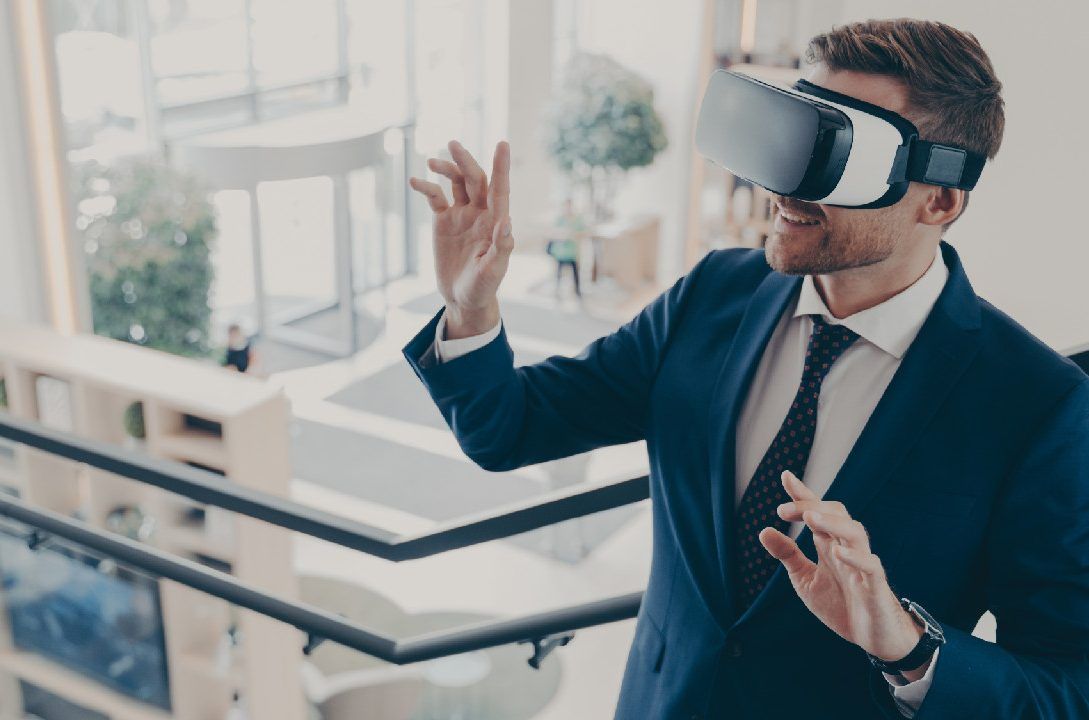Virtual reality (VR) is a groundbreaking technology that has transformed the way we experience and interact with digital content. With its ability to transport users into immersive, lifelike virtual environments, VR has revolutionized various industries, including gaming, entertainment, education, healthcare, and more. In this blog, we will dive into the captivating world of virtual reality, exploring its concepts, applications, and the potential it holds for shaping our future.
Understanding Virtual Reality:
Virtual reality refers to a computer-generated simulation of a three-dimensional environment that can be explored and interacted with by users. It typically involves wearing a VR headset or using other devices like gloves or motion controllers to enhance the sense of immersion. By simulating sight, sound, and sometimes even touch, VR creates an illusion of being present in a different reality, separate from the physical world.
Applications of Virtual Reality:
- Gaming and Entertainment: VR has revolutionized the gaming industry by providing an unprecedented level of immersion. Players can step into virtual worlds, interact with virtual objects and characters, and experience games in a whole new dimension. Additionally, VR extends to other entertainment areas, such as virtual concerts, 360-degree videos, and virtual tours of real-world locations.
- Training and Education: VR has proven to be an invaluable tool for training and education purposes. It allows learners to engage in realistic simulations, such as flight training, medical procedures, and hazardous environments, in a safe and controlled manner. VR-based education offers interactive and experiential learning, making complex concepts more accessible and memorable.
- Architecture and Design: VR enables architects and designers to visualize and experience their creations before they are physically built. By immersing clients in virtual environments, they can explore architectural designs, interior spaces, and even make real-time modifications. This enhances communication, collaboration, and decision-making throughout the design process.
- Healthcare and Therapy: VR finds applications in healthcare for pain management, rehabilitation, and mental health treatments. It can create immersive experiences that distract patients from discomfort, provide simulations for physical therapy, or create virtual environments for exposure therapy and phobia treatment.
- Social and Communication: VR offers a new dimension to social interactions, enabling people to connect and communicate in virtual spaces. Virtual social platforms allow users to meet and engage with others from around the world, attend virtual events, and collaborate in shared virtual environments.
The Future of Virtual Reality:
- Enhanced Hardware: VR hardware is continuously evolving, with advancements in resolution, field of view, and haptic feedback. Future devices may become smaller, more comfortable, and wireless, enhancing user experience and accessibility.
- Augmented Reality Integration: The integration of augmented reality (AR) and VR technologies holds tremendous potential. Combining real-world elements with virtual objects and environments can create mixed reality experiences that seamlessly blend the physical and digital worlds.
- Industry Applications: Virtual reality will continue to expand its reach across industries. From simulations for manufacturing and product design to virtual meetings and remote collaboration, VR has the potential to reshape the way we work, communicate, and innovate.
- Education and Training Evolution: VR will play an integral role in transforming education and training. It will facilitate personalized and immersive learning experiences, providing access to simulations and virtual classrooms that transcend geographical barriers.
- Healthcare Advancements: VR will continue to advance in the healthcare sector, aiding in diagnosis, treatment, and therapy. From mental health interventions to telemedicine and surgical training, VR has the potential to improve patient outcomes and revolutionize healthcare delivery.
Conclusion
Virtual reality has emerged as a groundbreaking technology that transports us to new realms of possibility. With its immersive experiences and diverse applications, VR has the potential to revolutionize industries, transform education, and enhance our daily lives. As technology continues to evolve, we eagerly anticipate the exciting future of virtual reality and the boundless opportunities it will unlock.
Related Posts:
Get Started with a free 15 -day trial
No credit card required for Trial Plan
Continue using starter plan for free forever, after trial or upgrade to Premium Subscription






